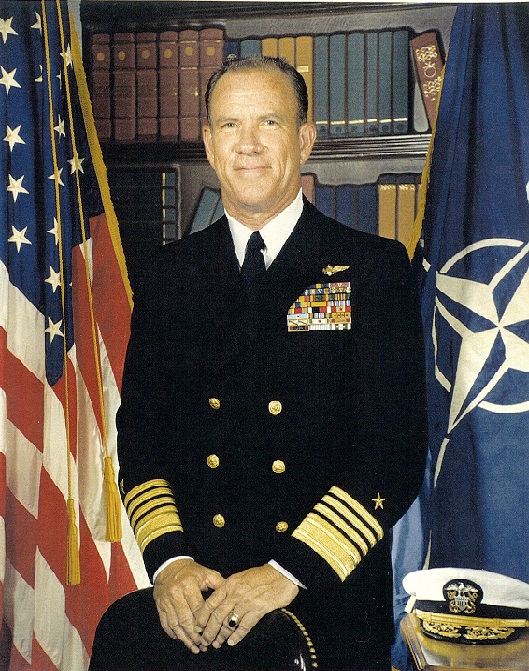
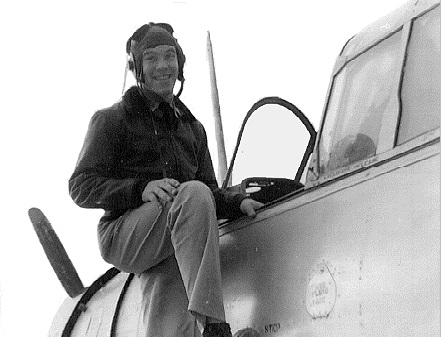
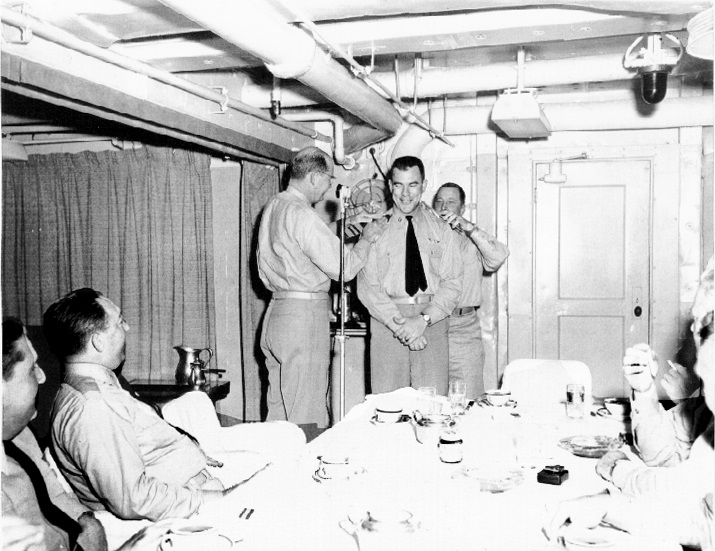
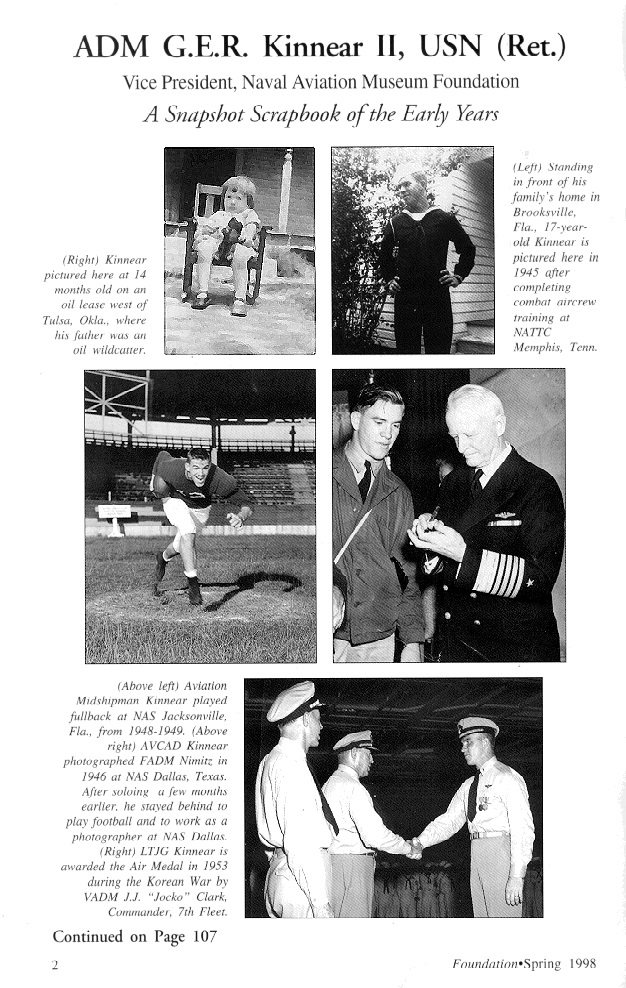
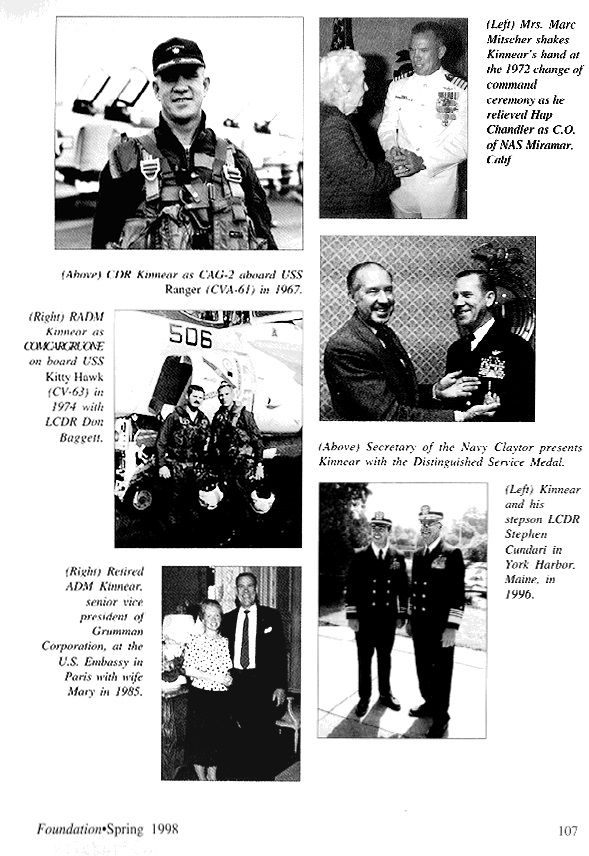
G.E.R. KINNEAR II
PROFESSIONAL EXPERIENCE
Kinnear and Associates 10/94 - Present
President
------------------------------------------------------------------------------------------------------------------------------------------
The Retired Officer’s Association, Washington, DC 10/92 - 10/94
Chairman, Board of Directors
New England Digital Corporation, Lebanon, NH 4/92 - 7/92
Vice Chairman and C.E.O.
(belated effort to turn around distressed firm)
University of New Hampshire, Durham, NH 10/88 - 2/92
Executive Vice President/Corporate Relations
Interim President
Executive Vice President
Grumman Aerospace Corporation, Bethpage, NY 10/82 - 10/88
Corporate Senior Vice President (Washington)
Corporate Vice President (Washington)
Vice President International (Washington)
United States Navy 1982
Retired in the grade of Admiral while serving as the U.S. Representative to the NATO Military Committee, Brussels, Belgium. Commanded the Naval Air Force U.S. Atlantic Fleet and served as Chief of legislative Affairs. Department of Navy, Assistant Chief of Naval Personnel (Plans and Policy), and Assistant Comptroller of the Navy (Cost Review and Reporting). Naval Aviator with sub-specialties in R&D, Personnel and Financial Management.
EDUCATION
Ph. D. Engineering Management, Stanford University 1966
M. S. Industrial Engineering, Stanford University 1966
M. A. Personnel management, George Washington University 1957
B. A. Physical Science & Math, George Washington University 1957
CORPORATE BOARDS
Compaq Computer Corporation Houston, TX
The Aerospace Corporation Los Angeles, CA
Precision Standard Corp. Birmingham, AL
USC, School of Business Administration Los Angeles, CA
Center for the Study of the Presidency New York, NY
Yorktown Museum Charleston, SC
U. S. Naval Heritage Center Washington, DC
Naval Aviation Museum Pensacola, FL
CLUBS
Cosmos Club Washington, DC
Army-Navy Country Club Arlington, VA
York Golf and Tennis York, ME
PERSONAL
Married Mary E. Cundari Kinnear
Children George III, D. Kevin, Kandace Kinnear Watkins,
P. Kimberley, Holley Kinnear Murray,
Douglas A., Stephen G. Cundari, Christina M.Cundari,
David F. Cundari
Recognitions Signa Nu Distinguished Alumnus 1991
Towers Memorial Air Commandry Airman Award 1980
Who’s Who in America 1978-93
Who’s Who in Finance and Industry 1988-93
Decorations Distinguished Service Medal (two Awards)
Legion of Merit (four awards, Combat V)
Distinguished Flying Cross (four awards)
Air Medal (sixteen awards)
Navy Commendation Medal (five awards)
Autobiography
George E. R. Kinnear, II was born in Mounds, Oklahoma, on January 12, 1928. Kinnear commenced a distinguished 37 year Naval career at age of 17. During service as an enlisted man, he was selected for pilot’s training in June, 1945. He was designated a Naval Aviator in August, 1948 and commissioned Ensign in December 1948.
After squadron tours, which included combat missions in Korea during 1953, Kinnear headed the Legislative Correlation Section of the Bureau of Aeronautics in 1954-56. He was assigned to George Washington University and Naval Postgraduate School from July, 1956 through July, 1958. Kinnear graduated from the Naval War College in 1961.
From July, 1961 through September, 1963, he served with several attack squadrons as pilot, Operations Officer and Executive Officer. He commanded Attack Squadron 106 in 1963-64, Carrier Air Wing Two from 1966-68, and Carrier Group One in 1974-75. Kinnear participated in combat operations in the Tonkin Gulf, and served in the Sea of Japan during the Pueblo incident.
In July 1968, Kinnear was assigned to the Office of the Chief of Naval Operations as Special Assistant to the Director of Navy Program Planning. In January, 1970, he reported to the Office of Navy Comptroller as Assistant Comptroller for Cost Review and Reporting, and as a Special Assistant to the Assistant Secretary of the Navy for Financial Management. During this same period, he was a member of the George Washington University faculty and taught Political Economics in the School of Management Sciences.
Kinnear assumed command of the Naval Air Station at Miramar in San Diego, CA, in July, 1971. The Grumman F-14 was introduced to the fleet during his tour there. Upon promotion to Rear Admiral he served as Assistant Chief of Naval Personnel and as Chief of Legislative Affairs for the Office of the Secretary of the Navy. In April, 1978, Kinnear was designated Vice Admiral and commanded the Naval Air Force of the U.S. Atlantic Fleet until July, 1981. He was promoted to Admiral and assumed the duties as the United States Military Representative to the NATO Military Committee in July, 1981. He retired in September, 1982.
Kinnear flew more than 100 combat missions over North Vietnam and led major Navy strikes in the Hanoi area. He has flown more different types of jet aircraft in combat than any other naval aviator and logged more than 5,000 hours of pilot flight time and more than 950 arrested carrier landings.
Kinnear has received dozens of awards and medals including: the Distinguished Service medal (two awards); the Legion of Merit with Combat “V” (four awards); Distinguished Flying Cross (four awards); and the Air Medal (16 awards).
In October, 1982, Admiral Kinnear was elected vice president - Washington Operations for Grumman International, Inc. He directed all Grumman matters in the nation’s capitol relating to overseas trade, including issues relating to export licensing.
In March, 1985, he was elected vice president - Washington Operations for Grumman Corporation, directing the company’s Washington staff in its relationship with government agencies and Congress.
On December 16, 1985, Kinnear’s responsibilities expanded to include all corporate activities of the Grumman Washington Office. On August 1, 1986, he was promoted to Senior Vice President, Washington Operations.
In October of 1988, Dr. Kinnear was appointed Executive Vice President of the University of New Hampshire, a newly created position responsible for all financial administrative affairs of the Durham campus. In February of 1990, he was named Interim President by the Board of Trustees.
He holds a Doctor of Philosophy degree in Engineering Management and a Master of Science in Industrial Engineering, both awarded at Stanford University. Kinnear received a Master of Arts degree in Personnel Management and a Bachelor of Arts degree in Physical Science and Mathematics at George Washington University.
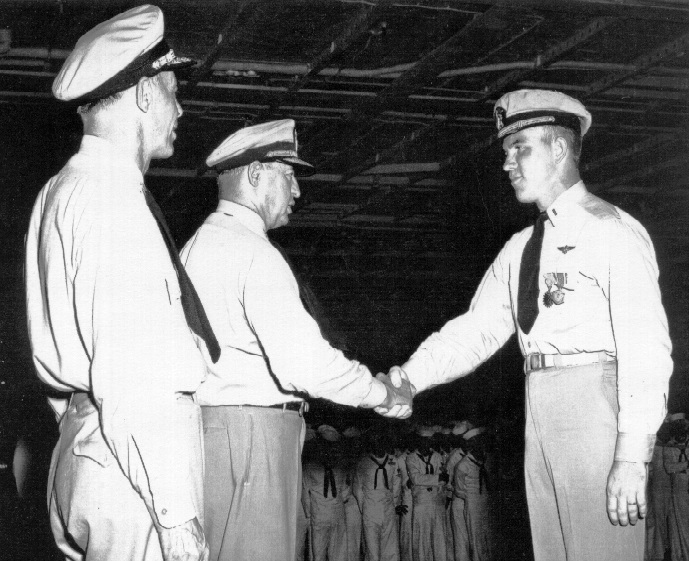
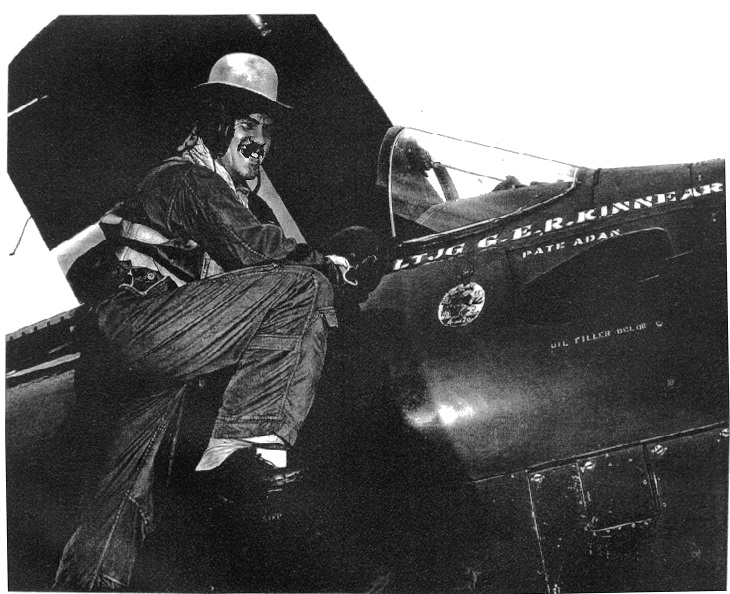
Where’s the Green Derby?
ADM George E. “Gus” Kinnear was in VA-45 flying Skyraiders during the Korean War. “I occasionally wore a green derby,” he said, “which was symbolic of the squadron insignia.” The insignia depicted a jaunty blackbird wearing boxing gloves, a derby, and puffing a cigar. During a visit, author James Michener took note of the derby, was inspired by it, and had a character in his novel, which became the movie, “The Bridges at Toko Ri,” wear one -- Mickey Rooney, the helo pilot when he manned his rescue helicopter.
“To my knowledge,” said ADM Kinnear, “the derby was last seen at NAS Key West where I left it.”
Wings of Gold welcomes any comments on the derby and where it might be. Give us a call at 1-800-669-9ANA, or drop a line to the magazine at ANA headquarters.
from “Wings of Gold,” Fall 1993, Mail Buoy
Letter to Chief of Naval Personnel re Pay Entry base Data
24 March 1964
From: Commander G.E.R. Kinnear II, 504388/1310, USN
To: Chief of Naval Personnel
Subj: Pay Entry Base Date; recomputation of
Ref: (a) Title 10 U.S. Code
(b) Comptroller General of the United States Decision
B-150780 of 7 June 1963
1. I served as an Aviation Midshipman under the provisions of Section 6906 of reference (a) from about 17 March 1947 until 28 December 1948. Until the advent of reference (b) this time was not considered “active service” because under 10 U.S.C. 6906 it is stated that “a Midshipman appointed under this section is entitled to the same pay and allowance as are provided for Midshipmen at the Naval Academy and to an additional amount equal to 50% of his pay for the length of service for any purpose, to either of the Navy or Marine Corps may be credited with service as a Midshipman at the U.S. Naval Academy … …”.
2. The Comptroller General broadened his discussion under reference (b) to include Reserve Midshipmen serving under 10 U.S.C. 6904. It should be remembered, however, that the case was primarily a determination of whether or not time served as an Aviation Midshipmen (10 U.S.C. 6906) was in fact active service. Therefore the statement that “We can find no reason for extending to the service performed by such Midshipmen any restrictions such as those imposed by the provisions of 10 U.S.C. 6116 on service performed by Midshipmen at the Naval Academy”, is considered to apply to all service of Aviation Midshipmen (10 U.S.C. 6906) as well as the certain portions of Reserve Midshipmen service (10 U.S.C. 6904) as cited in the decision. This is substantiated by the statement in the final paragraph of the decision “We can find no reason why the officer mentioned should not credit his service as a Midshipman (Aviation) from August 25, 1948, through August 24, 1950 or credit his service in the Armed Forces within the meaning of the provisions of 10 U.S.C. 6323.”
3. In view of this ruling by the Comptroller General that Aviation Midshipman service is in fact “active service” it is requested that my pay base entry rate be recomputed reflecting active service for my Aviation Midshipman service during the period March 1947 through December 1948.
/s/ G. E. R. Kinnear, II
ENCLOSURE (2)
DEPARTMENT OF THE NAVY
BUREAU OF NAVAL PERSONNEL
WASHINGTON, D.C. 20370
IN REPLY REFER TO
Pers-E24-EB:jga
504388/1310
27 April 1964
From: Chief of Naval Personnel
To: CDR George E. R. Kinnear, II, USN
Via: Commanding Officer
Attack Squadron 106
FPO, New York, New York
Subj: Pay Entry Base Date; information concerning
Ref:
(a) Your ltr of 24 March 1964
(b) Comptroller General of the United States Decision B-150780 of 7 June 1963
(c) Comptroller General of the United States Decision B-153394 of 4 March 1964
1. A review of the records of this Bureau, made in response to reference (a), shows that your pay entry base date of 26 October 1946 has been verified and found to be correct.
2. You are advised that reference (b) rendered a decision to the effect that active service as Midshipman, Naval Reserve Officer Training Corps and Holloway Midshipmen may be considered as active service for determining eligibility or retirement within the meaning of 10 U.S. Code 6323.
3. Under the provisions of reference (c) authority to credit certain service for either purposes, such as eligibility for retirement, does not establish a right to count such service for longevity and basic pay purposes since no credit is authorized for midshipman service and a Midshipman, although a number of the Naval service, you are not entitled to have your pay entry base date adjusted to include credit for your midshipman service.
W. T. Rinnant
By direction
ENCLOSURE (3)
NC/STAN/00/she
7220
6 OCT 1965
FIRST ENDORSEMENT on CDR. George E. R. KINNEAR, II, USN, 504388/1310
lt. request of 6 OCT 1965
From: Commanding Officer, ROTC Unit, Stanford University
To: Secretary of the Navy
Via: Chief of Naval Personnel
Subj.: Determination of Aviation Midshipmen Active Service as service for pay purposes
Encl.:
(1) Decisions of the Comptroller General, Decision B-150780
(2) CDR. KINNEAR lt. to BuPers of 24 March 1964
(Subj. Pay Entry Base Date; recompilation of)
(3) BUPERS ltr to CRD KINNEAR of 27 April 1964
(Subj: Pay Entry Base Date; information concerning)
(4) Decisions of the Comptroller General, Decision B-153394
(5) Title 37 -- Pay and Allowances of the uniformed Services
(6) 74th Congressional House Report 5577
(An Act to provide for aviation cadets in the Naval Reserve and Marine Corps Reserve)
(7) Decisions of the Comptroller General, Decision B-27930
1. Subsequent to World War II the Navy established a flight training program for career-minded officer candidates. Prior to August 13, 1946 the primary source of non-commissioned pilot trainees was the Aviation Cadet Training Program in the Naval Reserve. In the Fall of 1946 a concerted effort was made to have all aviation cadets who were interested in a regular Navy career accept appointments as Aviation Midshipmen, USN. The advantages of the Naval Aviation Midshipman Program (10 U.S.C. 6906) were supposedly that Midshipmen would have first priority on regular Navy Commissions, and that they would be afforded an opportunity to complete their Bachelor’s degree subsequent to their first tour of sea duty. The quid pro quo for these considerations was that Aviation Midshipmen would not be commissioned upon completion of flight training but would go to the Fleet as Naval Aviators with the rank of Midshipmen First Class, USN and complete two years service. Their Naval Aviation Cadet contemporaries underwent identical training and upon completion of training were eligible for the same assignments as the Aviation Midshipman, but as Ensigns, USNR.
When the first of the Aviation Midshipmen completed their required service and were commissioned as Ensign USN, many local disbursing officers counted the Aviation Midshipman time as service for pay purposes. Sometime in 1948 an administrative decision was made that because of the wording of Section 6906 Title 10 U.S.C. which stated that an Aviation Midshipman’s pay would be the same as for Midshipmen at the Naval Academy, Aviation Midshipman service time could not count as service for pay purposes. Administrative corrective action was mentioned on all sides in Fleet circles but none was forthcoming.
After the Korean War BuPers was queried as to whether it was the intent of the Navy, when it submitted the “Holloway Plan” legislation to exclude Aviation Midshipman time as service for pay purposes. The response was in the negative. A Mr. Blansford, Counsel for the Armed Services Committee in the House was queried if it was the intent of Congress to exclude the Aviation Midshipman service as service for pay purposes. The response also was in the negative. “The house only passed the legislation package submitted by BuPers.”
Several informal efforts for administrative relief were made in the period from 1954 to 1960. However, the Aviation Midshipman relief attempts always became entangled with efforts to have Academy Midshipman time to count for pay purposes.
On 1 February 1963 the Assistant Secretary of the Navy (Financial Management) requested a decision from the Comptroller General on the question of whether Aviation Midshipman service should count as active service for the purpose of retiring an officer under the provisions of Title 10, U.S.C. 6323. The Comptroller General stated under Decision B-150780 (Enclosure [1]) that such time was creditable as active service in the Armed Forces within the meaning of the provisions of Title 10, U.S.C. 6323.
It seemed reasonable that if such service was creditable for retirement purposes it should also be creditable for basic pay computational purposes. A request to BuPers (Enclosure [2]) was submitted requesting an adjustment of pay entry base date. BuPers responded (Enclosure [3]) that the Comptroller General had ruled under Decision B-153394 (Enclosure [4]) that although Aviation Midshipman time was creditable for retirement purposes, it was not creditable for “longevity and basic pay purposes.” The reasoning of this decision was that the word “Midshipman” did not appear in the group specifically mentioned under sub-paragraph (1) of 37 U.S.C. 205 which includes “active service as an officer, Army field clerk, flight officer or enlisted member of a uniformed service.” The decision does not mention subparagraph (2) which states “all periods during which he was enlisted or held an appointment as an officer, Army field clerk, or flight officer of -- -- -- (Enclosure [5]).
2. In 1935 the Navy effected an Aviation Cadet program which was almost identical to the Naval Aviation Midshipman program. The points of particular interest of that program which are spelled out under Ch, 49 stat. 157 (Enclosure [6]), are that the rank of the aviation cadet was specified as “next before warrant officers,” and that when traveling by air under competent orders, they shall receive the same allowances for traveling expenses as are now or may hereafter be authorized by law for officers of the Navy.” The issue of longevity was resolved under Section 7 of the Naval Reserve Act of 1938, 52 Stat. 1176 which stated “That for the purposes of computing increases in pay of commissioned officers on account of length of service, active service in the grade of aviation cadet shall be considered as commissioned service.” The Comptroller General took recognition of this fact in his Decision B-27930 of 5 November 1942 (Enclosure [7]). The Naval Aviation Cadet Act of 1942 explicitly stated that the original Aviation Cadets of the 1935 law would count their service as commissioned service for the purpose of computing pay increases. They were distinguished from the Aviation Cadets who were enlisted (not appointed) under the provisions of the 1942 act. It is of particular interest to note that under subparagraphs (1) and (2) of 37 U.S.C. 205 that Aviation Cadets who had service under the 1935 law are not mentioned presently. It must be remem-bered they were appointed and not enlisted. They ranked above warrant officers and were treated as officers in all respects and have never been considered as enlisted personnel as were subsequent Naval Aviation Cadets. In light of the Comptroller’s reasoning in Decision B-153394 they too would not be entitled to count their pre-commissioned service for pay purposes because they are not specifically enumerated among the current and obsolescent categories cited in 37 U.S.C. 205. It is doubted that anyone would conceive of following this argument to the point of denying them their Aviation Cadet service for longevity on future or past pay computations.
The Naval Aviation Midshipmen and the Aviation Cadets of the 1935 law are almost identical. Both were appointed and not enlisted, and both fulfilled the function of, and were treated as, junior officers after their designation as Naval Aviators even though not commissioned.
There is little question that the pre-commissioned service of both groups was active service in the most narrow construction of the phrase. However, in the case of the Aviation Cadets the Navy took care to insure their service was counted for pay purposes.
In the case cited under enclosure [1], the Comptroller General took notice of the fact that the Aviation Midshipman had flown fifteen combat missions in Korea. As the situation stands now National Guardsmen and Reservists who never left their home town during the Korean War are receiving longevity credit for their service. Aviation Midshipmen who were flying with the fleet, including combat missions, are not. Their’s may well be the only case in recent history of the U.S. Navy where actual combat service is not counted as service for pay purposes.
3. It is hoped that an administrative means can be found to allow Aviation Midshipman service to count for the purpose of computing pay. Subparagraph (2) of 37 U.S.C. 205 which states “all periods during which he was enlisted or held an appointment as an officer, Army field clerk, or flight officer,” may offer an adequate vehicle. The word appointment is specified and commission or commissioned is not mentioned. On the one hand flight officer is not defined in 37 U.S.C. and on the other hand “appointed” officers could well include Midshipmen. If administrative remedy is not feasible, then it is most respectfully requested that legislative relief be pursued through official action.
4. I am a loyal and devoted Naval officer. My purpose here is to correct an injustice that was inadvertently perpetrated by the Navy but to not detract from the Navy in so doing. I do not have the time, money, or inclination to seek redress in the courts or relief through private legislation. I do not believe that the Navy would expect one of its members to undertake such an endeavor in a case such as this. The routine administrative machinery has been stymied by this rather unique problem and your personal assistance is most respectfully requested.
/S/ George E. R. Kinnear, II
16 FEB 1966
Pers-A22-dr
SECOND ENDORSEMENT on Cdr. George E. R. Kinnear, II, USN,
504388/1310 ltr NC/STANU/00/sh 7220 6 October 1965
From: Chief of Naval Personnel
To: Secretary of the Navy
Subj: Determination of Aviation Midshipmen Active Service as service for pay purposes
1. Forwarded.
2. The basic correspondence concerns an inequity in the law governing the crediting of aviation midshipman services for basic pay purposes. This inequity arises out of the Pay Readjustment Act of 1942 in which the Congress chose to grant credit for longevity purposes for all military time, active or inactive, except midshipman and cadet time. Prior to 1942 neither inactive service nor midshipman active service had counted for basic pay purposes. With the passage of the 1942 Act there was the inequity in the law in that all inactive service was creditable except inactive midshipman and cadet service; and even worse, active midshipman and cadet service still was not creditable. The Chief of Naval Personnel has long been aware of this inequity, and the Navy and Army in the past have made strong attempts, without success, to persuade the Congress to make appropriate changes in the law to either eliminate or reduce this inequity.
3. The Chief of Naval Personnel is well aware that the ex-aviation midshipmen represented by Commander Kinnear do present a unique class. Under the aviation midshipman program the officer candidates in fact flew in the fleet and in some instances flew combat missions in Korea, as midshipmen. Understandably then these ex-aviation midshipmen are disturbed that their midshipman time does not count for basic pay purposes. In particular aviation midshipmen appear to be discriminated against when compared with aviation cadets who were being trained in the same era as the aviation midshipmen. The aviation cadets had enlisted status and thus their time as aviation cadets counted both for longevity and retirement purposes. The aviation cadets did not serve in the fleet as cadets, but were commissioned prior to fleet assignment. The Comptroller General of the United States has held that aviation midshipman time does count for retirement purposes and in this respect the two groups are equal. The Comptroller General has, however, also ruled that aviation midshipman time does not count for longevity; therefore, the aviation midshipman is in this respect in a less favorable position than the aviation cadet and, of course, his fleet service as a midshipman placed him in a less favorable position than the ex-aviation cadet who served in the fleet only as a commissioned officer.
4. Although these disadvantages on the side of aviation midshipmen in comparison with aviation cadets are recognized, in fairness we must point out that the aviation midshipman program did, at the time, present advantages which are often overlooked in these later years. The Aviation midshipman, though his commissioning was somewhat deferred when compared with an aviation cadet, was commissioned in the regular Navy and was afforded the opportunity to apply for permanent status in the regular Navy within a year after commissioning. At the time of the institution of the program it was envisioned that the only entry into permanent status in the regular Navy for aviation candidates would be through the midshipman program. In addition to this opportunity to become a permanent regular officer, another much overlooked advantage of the program was that if the officer was not accepted for retention in the regular Navy and if he accepted a reserve commission, he would receive $100/month (not to exceed $2000) for attendance at college. All school expenses were also to be paid. No such educational opportunities were, of course, afforded to the ex-aviation cadet.
5. The foregoing is a comparison of the equities as between ex-aviation midshipmen and ex-aviation cadets. The ex-aviation midshipmen must, however, also be compared with other classes of midshipmen who do not receive credit for their midshipmen time. Comparing this aviation group with the Naval Academy and ROTC midshipmen we may note that the ex-aviation midshipmen do receive retirement credit for their midshipmen time, while the Academy and ROTC graduates do not. The aviation midshipman program also called for two years of college at government expense prior to entry into flight training. This college time was as an enlisted man and therefore the ex-aviation midshipman did receive longevity credit for time spent in school at government expense while Academy and ROTC graduates receive no longevity credit for any of their pre-commissioning time spent in subsidized Academy or ROTC education. The ex-aviation midshipmen program did therefore have some decided advantages over these other programs.
6. These comparisons demonstrate, in our opinion, that no one group not now receiving credit for midshipman time can fairly be considered in isolation and to the exclusion of other classes of ex-midshipmen. As previously noted, the Chief of Naval Personnel has long been aware of the inequities involved in the cases of ex-aviation midshipmen as well as the other classes of midshipmen. For fifteen years the Department of the Navy actively and aggressively sought legislation to permit the crediting of midshipman time for pay purposes. A few times such proposals have cleared both the Department of Defense and the Bureau of the Budget. During the period of 1948-1963 at least eleven bills were introduced in the Congress without success. Since 1956 we have been unable even to obtain favorable actnbsp; ion of the Department of Defense and Bureau of the Budget on proposals of this type. The matter was considered by the Department of Defense pay studies which preceded the 1963 Pay Act and the proposal was rejected.
7. Commander Kinnear suggest that “Aviation Midshipman relief attempts always became entangled with efforts to have Academy time count for pay purposes.” It is true that our legislation attempts have involved Academy midshipmen as well as aviation midshipmen. They have also involved ROTC midshipmen and midshipmen of the V-7 program of World War II. The problem is one of all midshipmen regardless of program. We could not advance a proposal which would give longevity to aviation midshipmen while ignoring other classes of midshipmen; nor, for that matter, could we ignore the cadets of other services who are similarly discriminated against in the crediting of their time for pay purposes.
8. It may be again noted that at the present time under the Comptroller General rulings that ex-aviation midshipmen are in a much better position than other ex-midshipmen in that their time does count for retirement purposes. It is therefore recommended that special legislation not be proposed to credit aviation midshipman service for pay purposes because it would aggravate rather than reduce inequity in the Navy as a whole. And it is further recommended that our old legislative proposal to credit service for all types of midshipmen not be revived because the clear lessons of the past are that such a proposal is unwelcome at all levels -- the office of the Secretary of Defense, the Bureau of the Budget, and the Congress.
9. With respect to Commander Kinnear’s request that administrative action be taken to credit aviation midshipman time for pay purposes, it should be noted that the Comptroller General of the United States has ruled in unmistakable terms that aviation midshipman service cannot be credited in administratively establishing a pay entry base date. (B-153394, 43 CompGen 577). The rulings of the Comptroller General of the United States are, of course, authoritative and binding on the executive departments administering the law and cannot be disregarded. If such service is to be made creditable, it will require legislation.
/s/ B. J. SEMMES, JR.
copy to: Cdr. Kinnear
CO, NROTC Unit, Stanford University June 8, 1966
Mr. John R. Blanford
Chief Counsel, Armed Services Committee
United States House of Representatives
Washington, D.C.
Dear Mr. Blanford:
The attached correspondence has come to your attention before. In 1954 I consulted you informally as noted on page two of the basic letter. More recently I forwarded you a copy of that letter.
I have little to add to the basic letter. Paragraph 6 of the second endorsement seems to miss the main point of my letter. I tried to demonstrate that Aviation Midshipmen were very different from Midshipmen at the Naval Academy in the respect of considering their service for pay computation service. Flight Training service as a designated Naval Aviator and combat missions off attack carriers are not considered to be the same as duty at the Naval Academy.
Paragraph 4 of the second endorsement is interesting but not a very complete picture. The percentage of aviation cadets who received Regular Navy commissions probably exceeds that of the Aviation Midshipman in year groups 1947 and 1948, and may have also in 1949 and 1950. This was due to the Truman-Johnson cutbacks in Armed Services strength and the fact that 1947 and 1948 midshipman groups only had one opportunity for selection under that law. Many of us gained regular commissions under different legislative authority at much later dates. The opportunity for education was not much of an inducement because most, if not all, of the early year groups had World War II service and the G.I. Bill provided a much better arrangement. I attended Florida State University under the G.I. Bill after not being selected for a Regular commission in 1949. I was recalled as a Reserve in 1950 and made regular Navy in 1955.
I have apparently exhausted all prospects for administrative or legislative relief through the Navy. I recognize that the normal channel for legislative relief at this juncture would be through my Senator or Representative. These gentlemen from Florida are always responsive to the needs of their constituents. However, due to the history of this case, and the number and diversity of people affected, I have elected to approach you directly. Chairman Rivers’ and your own interests in the welfare of service personnel are becoming legend. It is for this reason I am acting so presumptuously. I am forwarding copies of this correspondence to Senator George Smathers and Representative Charles Bennett.
It must be remembered that I am a Naval Officer who is proud of his service. I am also a student of our system of government. It would seem that if it was not the intent of Congress to except Aviation Midshipman service for pay computation purposes, then a change in 37 USC 205 (a)(1) to include “Aviation Midshipmen appointed pursuant to 10 USC 6906” would be appropriate. Perhaps the pending pay legislation would be an ideal opportunity. If this cannot be accomplished without embarrassment to the Navy, or inviting unfavorable attention to me, then please return this correspondence to me. I am a Naval Officer first -- a former Aviation Midshipman second.
Thank you for your time and consideration in this matter.
Very respectfully,
/s/ GEORGE E. R. KINNEAR, II
Commander, U.S. Navy
Copy to:
Senator Smathers
Representative Bennett
DEPARTMENT OF THE NAVY
BUREAU OF NAVAL PERSONNEL
WASHINGTON, D.C. 20370
IN REPLY REFER TO
LA-61:ela
11 AUG 1972
Dear Mr. Chairman:
Your request for comment on H.R. 14275, a bill “To provide for crediting service as an aviation midshipman for purposes of retirement for nonregular service under chapter 67 of title 10, United States Code, and for pay purposes under title 37, United States Code,” has been assigned to this Department by the Secretary of Defense for the preparation of a report thereon expressing the views of the Department of Defense.
The purpose of section 1 of this bill is to authorize aviation midshipman service to be counted in determining eligibility for receipt of retired pay under chapter 67 of title 10, United States Code. That chapter provides for the payment of retired pay at age 60 to members and former members of the armed forces who have completed 20 years of satisfactory reserve or other non-regular service, active and inactive. Section 1332 (b) (7) of title 10, United States Code, lists the type of service that may be credited. H.R. 14275 would add service as an aviation midshipman to this list. Section 2 of the bill would amend section 205 (a) (1) of title 37, United States Code, so as to make aviation midshipman service creditable in determining an officer’s rate of basic pay.
The Navy’s aviation midshipman program was authorized by the Act of August 13, 1946, chapter 962 (60 Stat. 1057) It was discontinued after a brief trial, and authority for it has been repealed. Officer candidates in the program served two years in flight training and on flight duty in the status of aviation midshipmen. The Comptroller General has ruled that an officer’s aviation midshipman service is service on active duty for the purpose of determining his eligibility for 20 year active duty retirement under section 6323 of title 10, United States Code (42 Compl Gen. 669). It is therefore anomalous that reserve officers cannot count this service in determining their eligibility for retired pay at age 60. The subject bill would correct this discrepancy. It would also authorize service as an aviation midshipman to be creditable toward determining an officer’s rate of basic pay by amending section 205 (a) (1) of title 37, United States Code.
The records of this Department disclose that fewer than 100 persons are in a position to have their reserve entitlements affected by this legislation. Accordingly, the bill’s enactment would not result in increased budgetary requirements for the Department of Defense.
The Department of the Navy, on behalf of the Department of Defense, supports the enactment of H.R. 14275.
This report has been coordinated within the Department of Defense in accordance with procedures prescribed by the Secretary of Defense.
The Office of Management and Budget advises that, from the standpoint of the Administration’s program, there is no objection to the presentation of this report on H.R. 14275 for the consideration of the Committee.
For the Secretary of the Navy.
Sincerely yours,
/s/ Ted Snyder
E. K. Snyder
Rear Admiral, USN
Chief of Legislative Affairs
Honorable F. Edward Hebert
Chairman, Committee on Armed Services
House of Representatives
Washington, D.C. 20515
DEPARTMENT OF THE NAVY
BUREAU OF NAVAL PERSONNEL
WASHINGTON, D.C. 20370
IN REPLY REFER TO
Pers-A22a-meb
20 MAR 1973
MEMORANDUM FOR ASSISTANT CHIEF FOR PLANS AND PROGRAMS
(Pers-A)
Subj: Aviation Midshipmen
Ref: (a) H. R. 5056, 93d Congress
Encl: (1) Copy of Navy report on H. R. 14275, 92d Congress
1. A bill, H. R. 5056, to provide for crediting service as an aviation midshipman for purposes of retirement for non regular service under chapter 67 of title 10, USC, and for pay purposes under title 37, USC, was introduced in the House by Congressman McFall (D-Ca) on 1 March 1973.
2. Similar or identical bills have been introduced in the Congress in several past Congresses. H. R. 11265 of the 91st Congress passed the House but was not considered by the Senate. H. R. 14275 was introduced in the 92d Congress but no action was taken. The Navy and DOD have supported each of these bills.
3. On 13 March 1973, the Chief of Naval Operations was asked to comment on the use of the favorable report on H. R. 14275, 92d Congress as the DOD report on H. R. 5056, 93d Congress. Concurrence was given on 13 March. A copy of that report is enclosed for your further information.
4. This is another of those bills which affects a very small number and therefore does not generate a lot of interest or support. Unless a way is found to build a fire under this one, it probably will die like the others. Mr. Hebert has also indicated that items passed by the House Armed Services Committee in the past and not considered by the Senate will not again be taken up by the House Committee until the Senate acts.
/s/ J. Dean Mosher
Asst. Head, Legislation Branch
DEPARTMENT OF THE NAVY
BUREAU OF NAVAL PERSONNEL
WASHINGTON, D.C. 20370
IN REPLY REFER TO
LA-61C :ncs
LT Lloyd
Ext. 75759
29 MAR 1973
MEMORANDUM
For:
The General Counsel, Department of Defense
Attn: Director, Legislative Reference Service
Chief of Legislative Liaison
Department of the Army
Director, Legislative Liaison
Department of the Air Force
Subj: H.R. 5056, 93rd Congress, a bill “To provide for crediting service as an aviation midshipman for purposes of retirement for nonregular service under chapter 67 of title 10, United States Code, and for pay purposes under title 37, United States Code.”
Encl: (1) Copy of the proposed report on subject bill.
1. There is enclosed for coordination the report which the Department of the Navy proposes to submit on subject bill. It should be noted that this report is identical to the report submitted by the Department of the Navy, on behalf of the Department of Defense, on H.R. 14275 of the 92nd Congress, an identical bill.
/s/ John R. Brock
Captain, JAGC, U.S. Navy
Director, Legislation
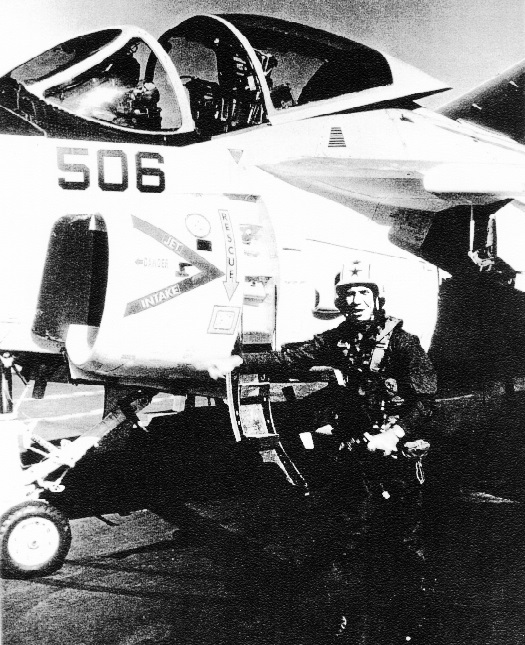
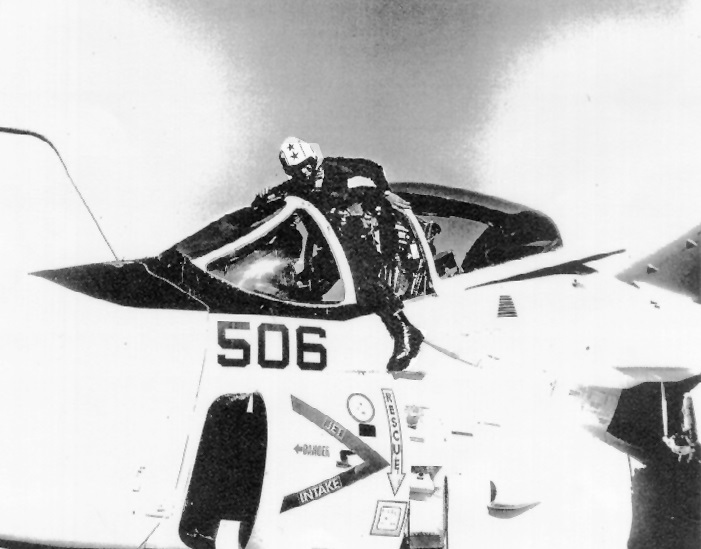
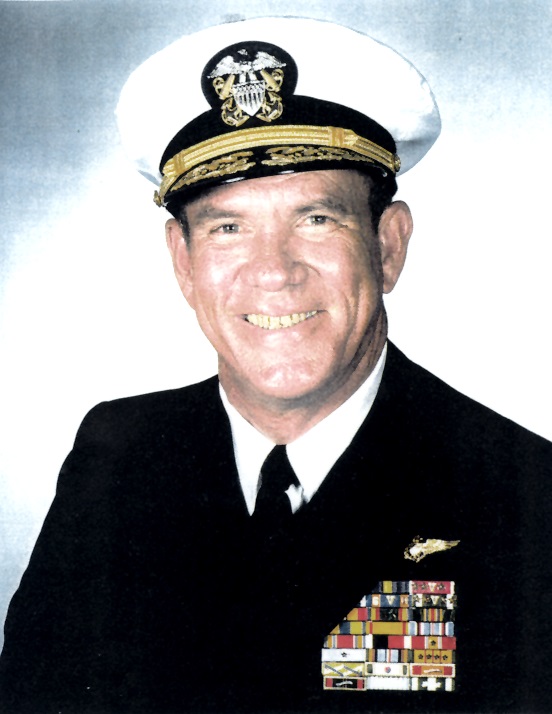
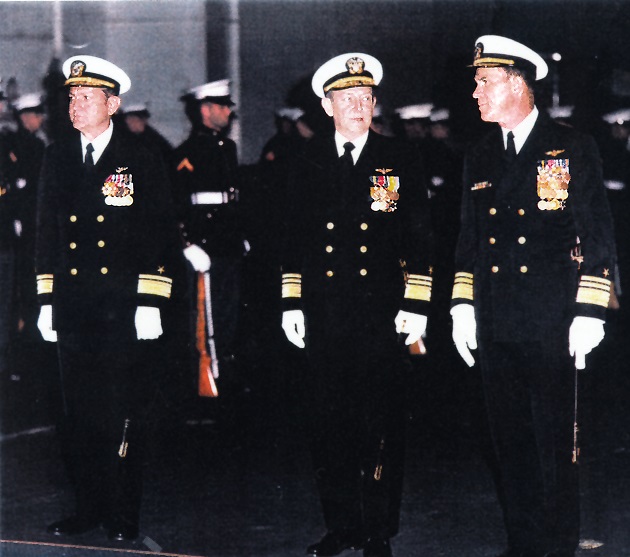
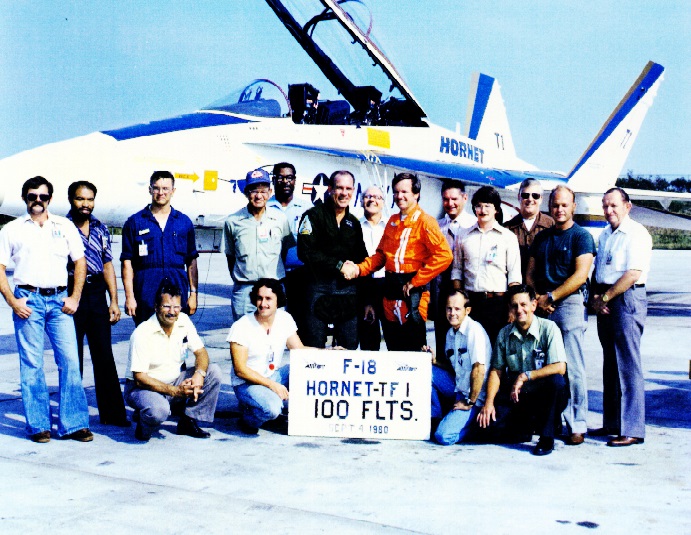
Note to Gus Kinnear re: Green Derby
August 1, 1996
Dear Gus,
Perhaps you can clarify what we've considered your history -- now called into question by a segment of Dick Shrewsbury's (4-47) narrative for the History.
"I spent over three hours being interviewed by James Michener, who was then writing a novel later to be names Bridges at Toko-Ri. I did notice that the Bonny Dick's Chief Warrent helicopter pilot, who often wore a top hat while flying, was immortalized by Mickey Rooney in the movie."
It was our understanding the Mickey Rooney character was based on you (on your green derby).
If our record is incorrect, we need to rectify it.
Look forward to your response.
Best regards,
Pat Francis
